Along the coast at the very tip of the small island Værøy lies the giant factory Lofoten Biomarine. The company is an example of sustainable industry and innovation, standing out as the world’s first CO2-neutral producer of marine oils and proteins. The facility is packed with exciting solutions, including a fiberglass walkway structure over 170 meters long supplied by Glassfiber Produkter AS. In November 2023, we visited the factory to see the walkway in use and get feedback from those who use it every day.
Utilization of the Entire Food Chain
Lofoten Biomarine receives waste from the fishing industry and converts these raw materials into, among other things, feed for the aquaculture industry. This way, the entire fish is used, including parts not suitable for human consumption. For the managing director, Jon Vestengen, it is important that sustainability is considered at every stage of the food chain.
Each year, Lofoten Biomarine is set to receive approximately 70 million kilograms of fish waste. To handle this enormous volume, two rows with a total of 12 large storage tanks have been built. The fiberglass structure towers between them.
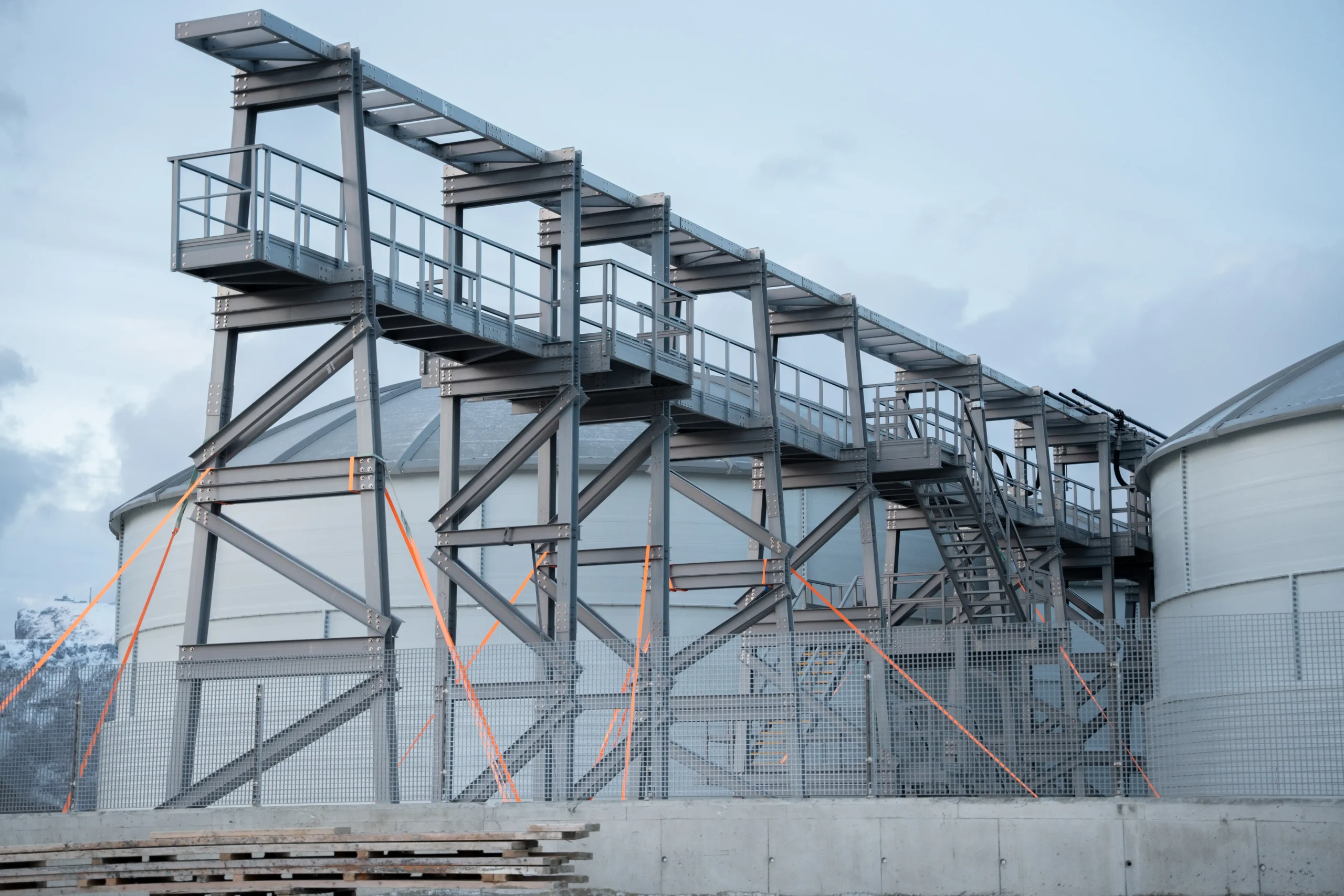
The fiberglass walkway stands 11 meters tall and has staircases leading up from ground level.
The fiberglass walkway became the solution.
The walkway is 11 meters high and stretches 170 meters from the factory building out between the storage tanks. It serves as a supporting structure for all infrastructure, providing employees with easy and safe access to both tanks and pipes. The pipes transport raw materials, oils, and proteins around the factory and are located on top of the walkway. Given the challenging environment on Værøy, the choice of materials for the supporting structure was crucial. The structure not only had to withstand the changing weather conditions but also resist saltwater spray from the nearby sea. For Jon, fiberglass was the obvious choice.
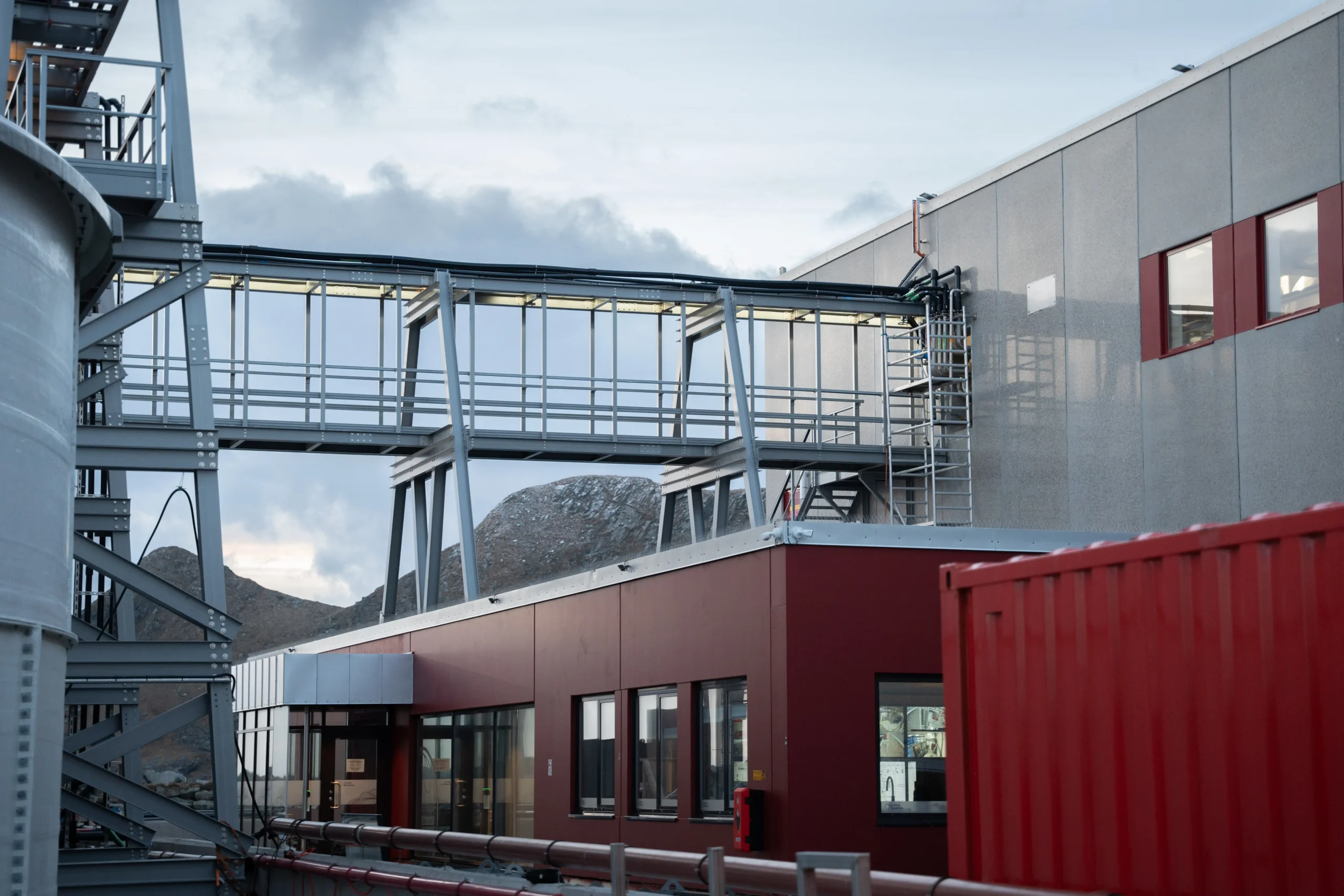
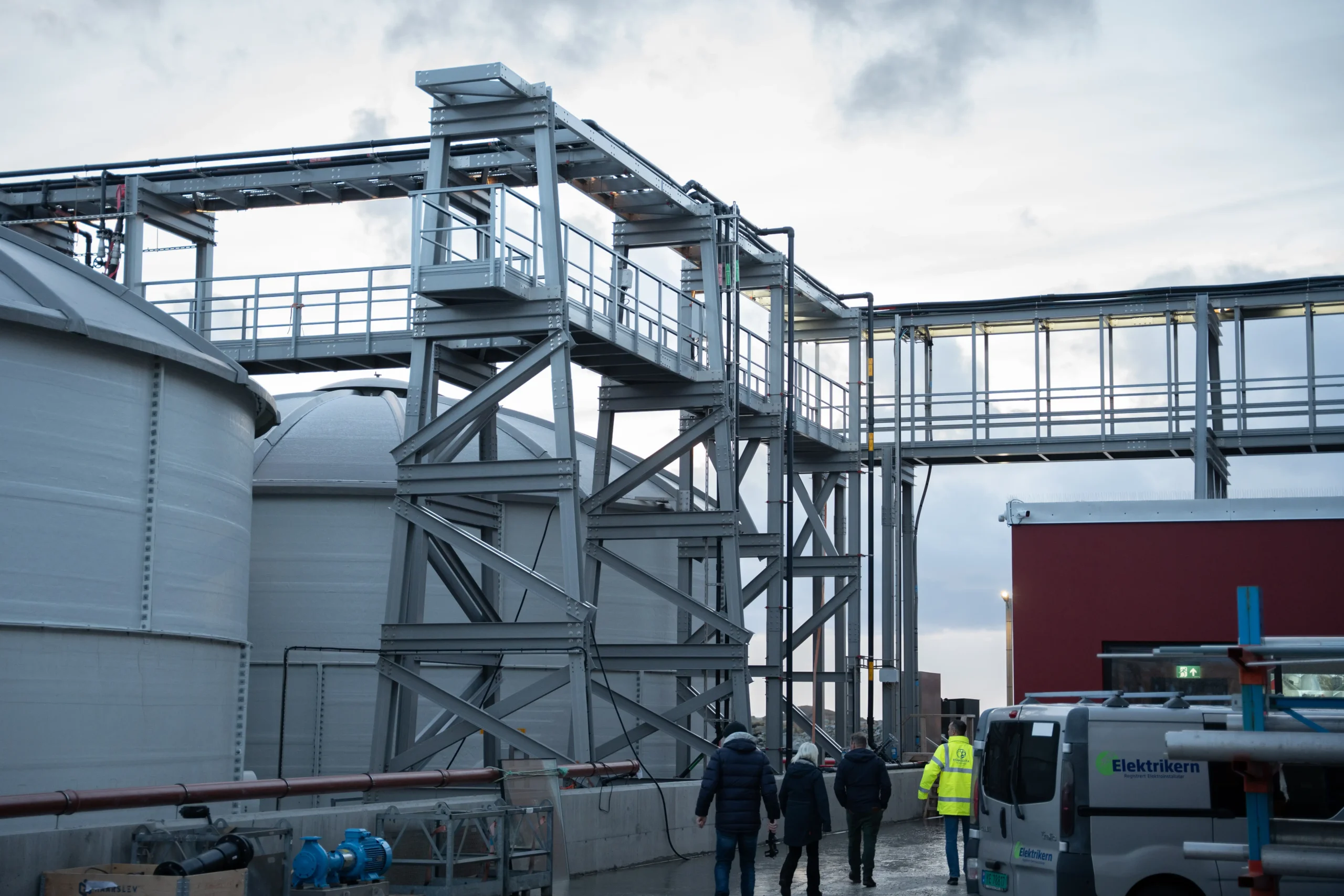
The walkway stretches from the factory building out between the 12 tanks.
Long lifespan and “Cost of ownership”
When Jon was choosing the material, he particularly focused on two points.

“We initially chose fiberglass because of its lifespan. It was because of lifespan and cost of ownership”
– Jon Vestengen
He knows how much extra time and money goes into maintenance, especially in an environment like Værøy. With fiberglass, he doesn’t have to worry about maintenance or replacing parts, and can focus on core tasks. For Lofoten Biomarine, fiberglass has been a “set and forget” solution.
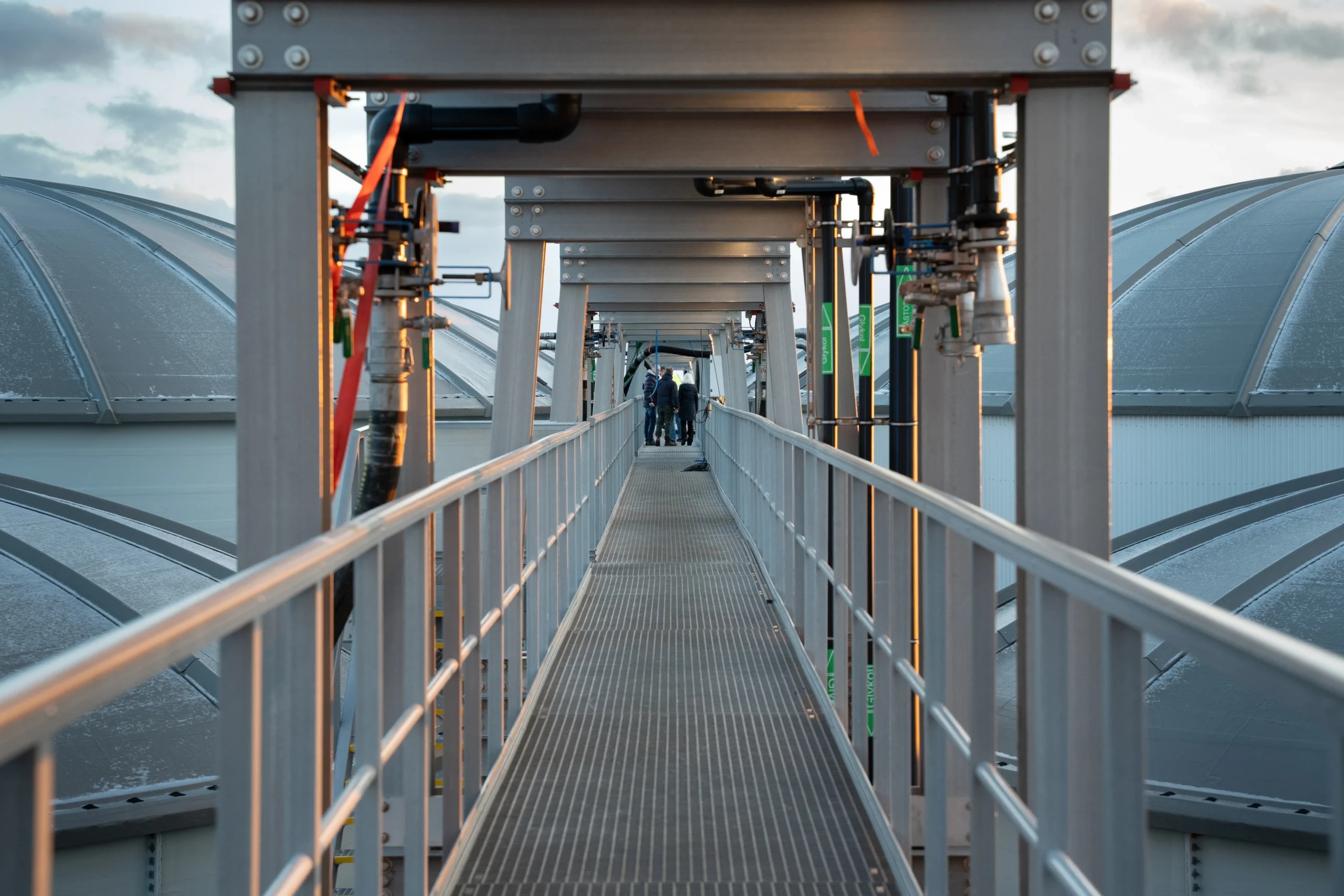
The walkway preserves safety and provides easy access to both tanks and pipes.
“If I were to build again, I would choose fiberglass.”
Looking back at the completed work, Jon has no doubt that fiberglass was the right choice for the walkway structure. He has learned a lot from his experience with fiberglass material. Inside the factory, Jon used materials other than fiberglass for stairs, walkways, ladders, etc. While he is satisfied with these solutions, he acknowledges that he might have chosen fiberglass if he were to build again.
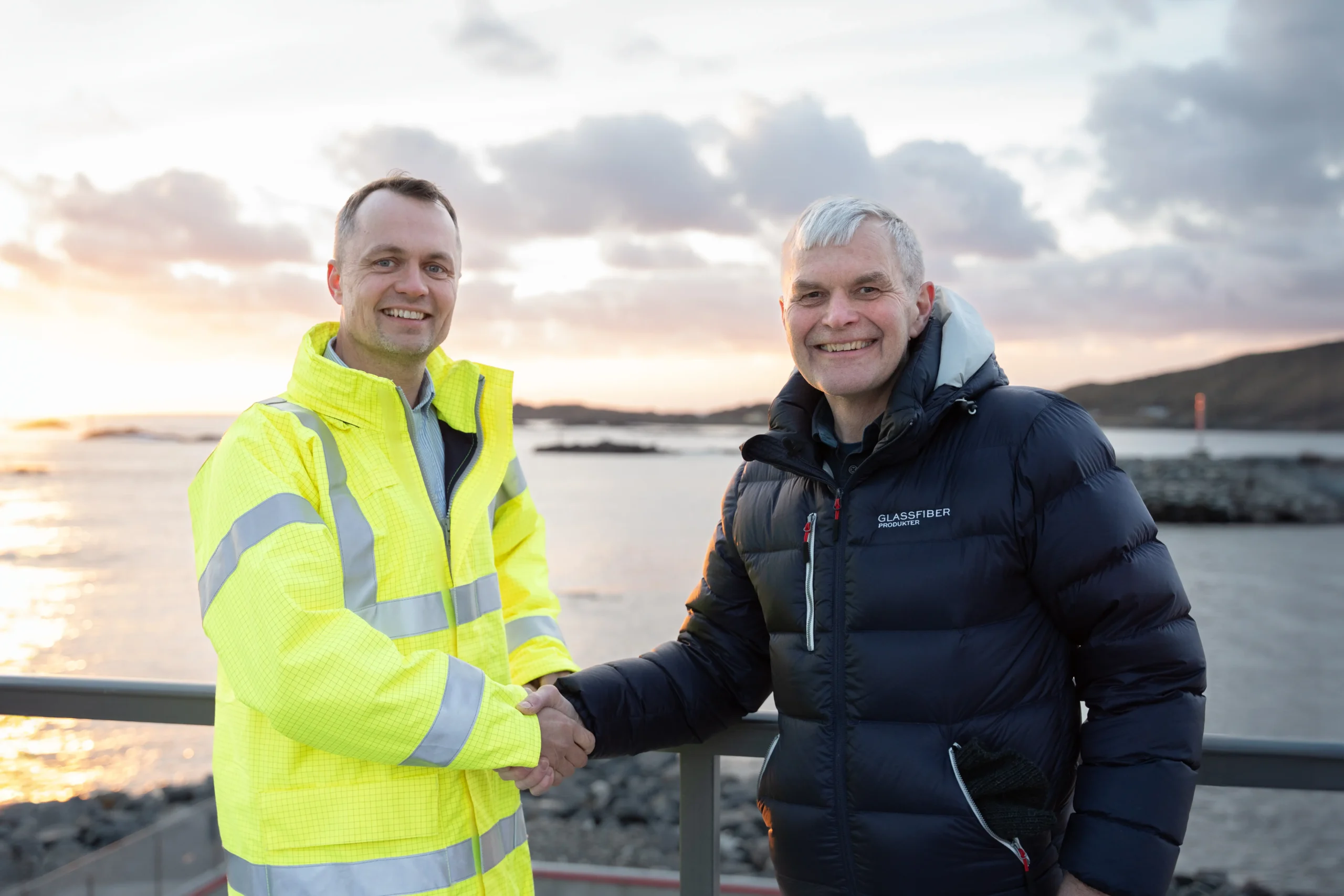
Jon Vestengen and Elling Stangeland, General Manager at Glassfiber Produkter AS.
Here you can see a video from our visit where Managing director Jon Vestengen shares his experiences with fiberglass.